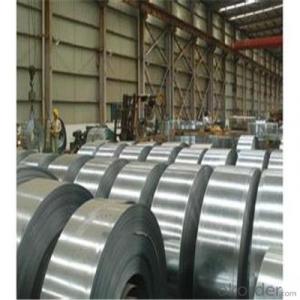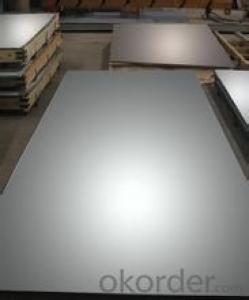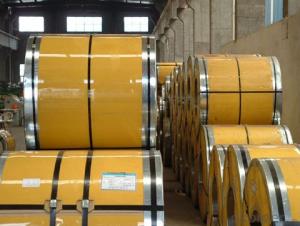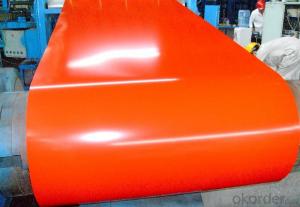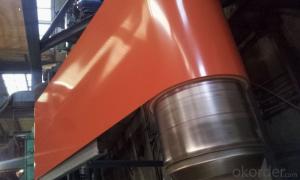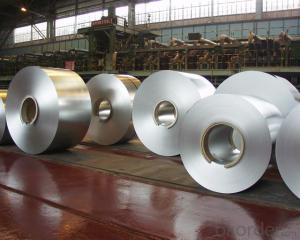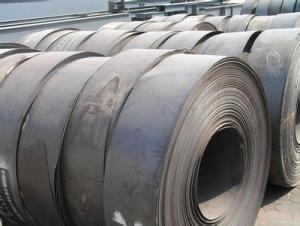Hot and Cold Rolled Steel Strip Coils with High Quality in China
- Loading Port:
- Qingdao
- Payment Terms:
- TT OR LC
- Min Order Qty:
- 122 m.t.
- Supply Capability:
- 122222 m.t./month
OKorder Service Pledge
OKorder Financial Service
You Might Also Like
Item specifice
Description of Steel Strip Coils:
Steel strips is one of our main products that is widely used in making band saw blade & other blades to cut paper, weed, etc.
Festures of Steel Strip Coils:
1. Each coil is closely covered by oil paper or plastic film.
2. Outside it is firmly packed with sack cloth or compound paper.
3. Steel strap or PP strap to pack the outside to ensure safety.
Specifications of Steel Strip Coils:
Our Products are packed and labeled according to rigorous internal regulations and customer's requests. Great care is taken to avoid any damage which might be caused during storage or transportation. In addition, clear labels are tagged on the outside of the packages for easy identification of the product and quality information.
Images of Steel Strip Coils:
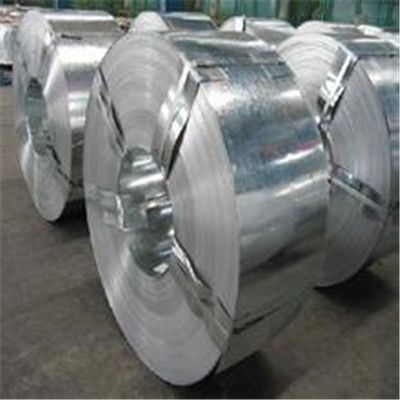
FAQ
1.What's your MOQ?
25MT, it is for one container.
2.Do you have QC teams?
Yeah, sure, our QC team is very important, they will keep the quality control for our products.
3. What's your normal delivery time?
Our delivery time about 10-20days for standard sizes, if you have other requirements like hardness and width ,it is about 20-40days.
- Q:Can steel strips be used for structural purposes?
- Yes, steel strips can be used for structural purposes. They are often employed in construction and engineering applications where strength, durability, and stability are essential. Steel strips are commonly utilized in the fabrication of beams, columns, braces, and supports, providing crucial support and reinforcement to structures.
- Q:What is the ductility of a steel strip?
- The ability of a steel strip to stretch or deform without fracturing is known as its ductility. It quantifies the ease with which the steel strip can be molded or bent into various configurations, like coiling it into a spiral or shaping it into complex forms. Ductility is a crucial attribute for steel strips as it facilitates their manipulation in diverse manufacturing procedures. Steel strips with exceptional ductility offer increased versatility and find applications across a broad spectrum of industries, including automotive, construction, and manufacturing.
- Q:Can steel strips be used in packaging or strapping applications?
- Yes, steel strips can be used in packaging or strapping applications. Steel strips are strong and durable, making them ideal for securing and bundling heavy or sharp-edged items during transportation or storage. They provide excellent strength and resistance to impact, making them suitable for securing goods that require extra protection. Steel strips also offer high tensioning capabilities, ensuring a secure and tight grip on packages or bundles.
- Q:How are steel strips used in the manufacturing of pipelines?
- Steel strips are an essential component in the manufacturing of pipelines. These strips are typically made from high-quality steel and are used to form the body of the pipeline. The manufacturing process begins with the steel strips being rolled into a cylindrical shape, commonly known as a pipe. The steel strips are first subjected to a series of treatments to ensure their strength and durability. This may involve heat treatment or various surface coatings to protect against corrosion. Once the strips are prepared, they are fed into a pipe mill where they are welded together along the longitudinal seam to create a continuous pipe. After the welding process, the pipe is further inspected to ensure its integrity. This inspection includes various tests such as ultrasonic testing or X-ray examination to detect any defects or flaws. If any imperfections are found, they are repaired or the affected section of the pipe is cut out and replaced. Once the pipe passes all quality checks, it is then further processed to meet specific requirements. This may involve additional treatments such as applying an external coating to protect against environmental factors or adding insulation for pipelines that are used to transport fluids at extreme temperatures. Overall, steel strips play a crucial role in the manufacturing of pipelines as they form the base material for the pipes. The quality and strength of these strips are essential to ensure the durability and reliability of the pipeline system, making them an integral part of the manufacturing process.
- Q:How do steel strips perform in structural components?
- Steel strips are commonly used in structural components due to their excellent strength, durability, and flexibility. They provide necessary support and stability, allowing structural components to withstand heavy loads and resist deformation. Moreover, steel strips exhibit high resistance to corrosion and fire, making them ideal for long-term use in various construction projects.
- Q:What are the standard dimensions for steel strips?
- The dimensions of steel strips can differ depending on the specific application and industry requirements. However, there are commonly accepted dimensions in the manufacturing and construction sectors. Steel strips are usually available in various widths, ranging from 1/2 inch to 12 inches. The most frequently used widths are 1 inch, 2 inches, and 4 inches. The thickness or gauge of steel strips can also vary and is typically indicated by a numerical value. Common thicknesses include 16 gauge (0.0598 inches), 18 gauge (0.0478 inches), and 20 gauge (0.0359 inches). Furthermore, the length of steel strips can be customized to match project requirements, with standard lengths typically falling between 8 feet and 12 feet. It is important to consider that these dimensions are not exhaustive and may differ based on regional standards and specific industry needs.
- Q:How are steel strips joined together in applications?
- Steel strips can be joined together in various ways, including welding, riveting, adhesive bonding, and mechanical fasteners. Welding is the most commonly used method. It involves melting the edges of the strips and fusing them to create a strong bond. Different welding techniques, such as arc welding, resistance welding, or laser welding, can be used depending on the application requirements. Riveting is another popular method. It involves inserting a metal rivet through drilled holes in the strips and deforming the end of the rivet to secure the strips together. This method provides a reliable and secure connection that can withstand high loads and vibrations. Adhesive bonding is a flexible and versatile method. It involves applying a specially formulated adhesive or bonding agent between the strips and allowing it to cure. The adhesive forms a strong bond that evenly distributes the load, providing excellent strength and durability. Adhesive bonding is particularly suitable for joining thin and lightweight steel strips or achieving a seamless appearance. Mechanical fasteners, such as screws, bolts, or nuts, can also be used to join steel strips. These fasteners offer a convenient and removable connection, making them suitable for applications requiring disassembly or reassembly. Ultimately, the choice of joining method depends on factors such as application requirements, strip type and thickness, expected load and stress conditions, as well as cost and time considerations.
- Q:What are the common surface defects in steel strips?
- Common surface defects in steel strips include: 1. Scratches: These are visible marks or grooves on the surface of the steel strip caused by contact with abrasive materials or improper handling during processing or transportation. 2. Scale: Scale refers to the formation of a thin layer of iron oxide on the surface of the steel strip. It occurs during the hot rolling process and can negatively impact the appearance and quality of the steel. 3. Rust: Rust is the result of the oxidation of iron in the presence of moisture and oxygen. It can occur on the surface of steel strips due to exposure to humid or corrosive environments, improper storage, or inadequate surface protection. 4. Roll marks: Roll marks are surface imperfections caused by the rolling process. They typically appear as elongated depressions or ridges on the steel strip surface and can affect both the appearance and performance of the material. 5. Stretcher strains: Stretcher strains occur when the steel strip undergoes excessive stretching during processing or cooling. These strains can cause visible deformations on the surface, such as waviness or localized areas of thickness variation. 6. Surface roughness: Steel strips may exhibit variations in surface roughness due to uneven rolling or inadequate surface finishing processes. Excessive roughness can impact the appearance and functionality of the steel. 7. Edge cracks: Edge cracks are defects that occur along the edges of the steel strip. They can be caused by improper edge trimming, excessive tension during processing, or inadequate material properties. 8. Slivers: Slivers are thin, elongated pieces of steel that detach from the surface of the strip during processing. They can result from defects in the raw material, improper processing techniques, or inadequate edge conditioning. It is important to identify and address these surface defects to ensure the overall quality and performance of steel strips in various applications.
- Q:How are steel strips tested for corrosion resistance?
- Steel strips are typically tested for corrosion resistance through various methods such as salt spray testing, electrochemical testing, immersion testing, and humidity testing. These tests involve subjecting the steel strips to controlled environments or solutions that simulate corrosive conditions. The strips' resistance to corrosion is then evaluated by measuring factors like corrosion rate, appearance, and the formation of rust or oxide layers.
- Q:How do steel strips compare to other materials in terms of corrosion resistance?
- Steel strips generally have good corrosion resistance compared to many other materials, especially when they are coated or treated with protective layers such as galvanization. However, specific comparison to other materials would depend on the specific properties and coatings of those materials.
1. Manufacturer Overview |
|
|---|---|
| Location | |
| Year Established | |
| Annual Output Value | |
| Main Markets | |
| Company Certifications | |
2. Manufacturer Certificates |
|
|---|---|
| a) Certification Name | |
| Range | |
| Reference | |
| Validity Period | |
3. Manufacturer Capability |
|
|---|---|
| a)Trade Capacity | |
| Nearest Port | |
| Export Percentage | |
| No.of Employees in Trade Department | |
| Language Spoken: | |
| b)Factory Information | |
| Factory Size: | |
| No. of Production Lines | |
| Contract Manufacturing | |
| Product Price Range | |
Send your message to us
Hot and Cold Rolled Steel Strip Coils with High Quality in China
- Loading Port:
- Qingdao
- Payment Terms:
- TT OR LC
- Min Order Qty:
- 122 m.t.
- Supply Capability:
- 122222 m.t./month
OKorder Service Pledge
OKorder Financial Service
Similar products
New products
Hot products
Related keywords
